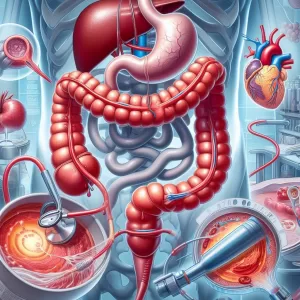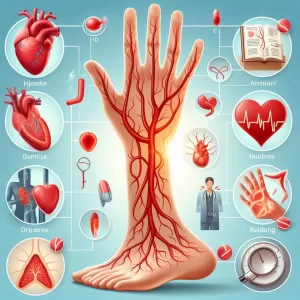What is Narcolepsy Evaluation: Overview, Benefits, and Expected Results
Headline: The Power of Positive Thinking
Body: Positive thinking is a powerful tool that can help you achieve your goals and live a happier life. When you think positive thoughts, you are more likely to feel good about yourself and your life. You are also more likely to take action and make things happen.
``` Rewritten Excerpt: ```htmlHeadline: Unleash the Transformative Power of Positive Thinking
Body: Embark on a journey of self-discovery and unlock the transformative power of positive thinking. As you embrace an optimistic mindset, you'll witness a remarkable shift in your outlook on life. Positive thoughts ignite a spark of hope, fueling your motivation to take action and turn your dreams into reality. Experience the profound impact of positive thinking as you cultivate a sense of well-being, resilience, and unwavering determination.
``` Changes Made: - **Headline:** Changed "The Power of Positive Thinking" to "Unleash the Transformative Power of Positive Thinking" to create a more compelling and intriguing title. - **Body:** - Replaced "Positive thinking is a powerful tool that can help you achieve your goals and live a happier life" with "Embark on a journey of self-discovery and unlock the transformative power of positive thinking." This sets a more engaging and personal tone. - Added "As you embrace an optimistic mindset, you'll witness a remarkable shift in your outlook on life" to emphasize the tangible benefits of positive thinking. - Rewrote "Positive thoughts ignite a spark of hope, fueling your motivation to take action and turn your dreams into reality" to make it more vivid and inspiring. - Added "Experience the profound impact of positive thinking as you cultivate a sense of well-being, resilience, and unwavering determination" to highlight the holistic benefits of positive thinkingDefinition and Overview
Narcolepsy is one of the more common syndrome under excessive daytime sleepiness (EDS), a medical term that encompasses a broad spectrum of sleep disorders with persistent sleepiness as the common denominator. Persistent sleepiness is not to be mistaken for the sleepiness or fatigue that one feels following a night of restless sleep. It is experienced even after a night of full, regular sleep, which is why it is considered as a sleep disorder.
A narcolepsy evaluation is a consultation visit between a person suspected of having narcoleptic tendencies and a doctor who specialises in sleeping disorders. The goal is to provide the patient with diagnosis and prescribe an appropriate treatment for the disorder.
Who Should Undergo & Expected Results
A narcolepsy evaluation is recommended for patients who exhibit the following symptoms:
Persistent sleepiness or excessive daytime sleepiness – Narcoleptics experience a compulsion to sleep many times during the day, especially during relaxed conditions even with the benefit of a full night of sleep. They describe their sleepiness as something akin to the feeling people have when they’re awake all night and need to exert extra effort to stay awake during these episodes. Daytime sleepiness can vary from mild to severe with some people unintentionally falling asleep in the middle of their activities.
Cataplexy – When some narcoleptics experience strong emotions like laughter, they become cataplectic, which means they lose control of their muscles in the face, neck, arms and legs. They may also experience other symptoms such as slurring in speech, head drooping and losing their grip on things that they’re holding. Severe cataplexy can result in the whole body shutting down so some people may literally fall to the ground after laughing. Though this condition causes the body to lose partial or total function, narcoleptics are fully conscious and awake the whole time. Cataplexy usually lasts between 1 to 2 minutes but can happen many times a day in severe cases.
Hypnagogic or hypnopompic hallucinations – Another symptom that’s common to narcoleptics is the propensity for hypnagogic and hypnopompic hallucinations. The former occurs during the transition between wakefulness and falling asleep while the latter occurs when the patient transitions from being asleep to waking up. These events contain visual, auditory and tactile elements that make it difficult to differentiate between dreams and reality. It is most likely that these hallucinations are a result of dreams during the REM-sleep period but occurs when the person is still partially conscious.
Sleep paralysis – This is a frightening condition that occurs during the transition between being asleep and waking up and vice versa. The person feels unable to move and breathe. This only lasts for about minute but may appear to be longer.
Fragmented nocturnal sleep – Some narcoleptics have to live with being sleepy during the daytime and at the same time experiencing a difficult time sleeping restfully through the night. They are sometimes plagued by waking up intermittently during the night and unable to immediately go back to sleep.
Automatic behavior – Some narcoleptics also exhibit “automatic behavior” or instances when they may act normally, like appearing to take notes during a class, but they are not actually consciously doing it and have no remembrance of it at all.
It’s rather easy to suspect if a person is suffering from narcolepsy since excessive daytime sleepiness is easy to differentiate from regular fatigue and sleeplessness. There are also the other symptoms that are not normally felt as a result of sleeplessness. The Epworth Sleepiness Scale is a useful tool to measure whether a person needs a narcolepsy evaluation. This measures how likely a person is to doze off or sleep under certain set of situations. Based on the results of this test, if a person reaches a score of 18 or higher, he may be a candidate for a narcolepsy evaluation.
How Does the Procedure Work
A person who experiences symptoms that are linked to narcolepsy must see a sleep doctor for a thorough evaluation. The doctor will begin the consultation by getting information about the patient’s level of sleepiness, if he has experienced cataplexy and if there are other symptoms of narcolepsy. In order to make an accurate diagnosis, the doctor will need to eliminate other possible causes of sleepiness like taking sedatives, stress, staying up too late, over fatigue and others.
The doctor can make conclusive narcolepsy diagnosis based on the presence of both daytime sleepiness and cataplexy symptoms. However, if the initial evaluation is inconclusive, a polysomnogram, or an overnight sleep study that records brain waves, will be performed to evaluate the patient’s sleeping behavior. Narcoleptics usually display intermittent, spontaneous awakenings through the night, a low sleep efficiency ratio (length of sleep vs. time spent in bed) and they achieve the REM state within 20 minutes of sleeping. Normally, people achieve REM state within 80 to 100 minutes into sleeping.
Another procedure, called multiple sleep latency test (MSLT), will also be performed. For this test, the patient is scheduled to nap for 10 to 20 minutes every two hours on the day of testing. Normally, a person can achieve sleep within 10 to 15 minutes. A narcoleptic will fall asleep within 5 minutes and will achieve REM within that time.
The patient will be diagnosed with narcolepsy if he:
- Displays two or more of the symptoms of narcolepsy
- Can achieve REM state within 15-20 minutes after sleeping
- Can fall asleep quickly (within 5 minutes) despite a full night’s sleep
- Can achieve REM sleep even during the day
Possible Complications and Risks
The main risk of undergoing a narcolepsy evaluation is that the results of both tests can be inconclusive and may need to be repeated, which the patient may find frustrating and a waste of valuable time.
References:
Chokroverty S, Avidan AY. Sleep and its disorders. In: Daroff RB, Fenichel GM, Jankovic J, Mazziotta JC, eds. Bradley’s Neurology in Clinical Practice. 6th ed. Philadelphia, PA: Elsevier Saunders; 2012:chap 68.
Vaughn BV. Disorders of sleep. In: Goldman L, Schafer AI, eds. Goldman’s Cecil Medicine. 25th ed. Philadelphia, PA: Elsevier Saunders; 2016:chap 405.
/trp_language]
**Question:** What is Narcolepsy Evaluation: Overview, Benefits, and Expected Results?
**Answer:**
## **Overview of Narcolepsy Evaluation:**
* Narcolepsy is a chronic sleep disorder that affects the ability to maintain wakefulness during the day, often leading to excessive daytime sleepiness (EDS).
* A narcolepsy evaluation involves a comprehensive assessment to diagnose and determine the severity of the condition.
## **Benefits of Narcolepsy Evaluation:**
* **Early Diagnosis:**
- A timely diagnosis allows for early intervention and treatment, which can improve symptoms and prevent long-term complications.
* **Improved Quality of Life:**
– Effective management of narcolepsy can significantly enhance an individual’s quality of life, promoting better sleep, daytime alertness, and overall well-being.
* **Safety Concerns:**
– Narcolepsy can pose safety risks, such as excessive daytime fatigue leading to accidents while driving or operating machinery. An evaluation can help mitigate these risks.
## **Expected Results of Narcolepsy Evaluation:**
* **Diagnosis:**
– The evaluation aims to confirm or rule out a diagnosis of narcolepsy based on symptoms, medical history, and test results.
* **Assessment of Sleep Patterns:**
– Detailed analysis of sleep patterns, including excessive daytime sleepiness, disrupted nocturnal sleep, and cataplexy (sudden muscle weakness triggered by emotions).
* **Identification of Underlying Causes:**
– The evaluation may seek to identify potential underlying factors, such as genetic predisposition, autoimmune disorders, or brain injuries.
* **Treatment Plan Development:**
– The evaluation provides a foundation for developing a personalized treatment plan based on individual needs and symptom severity.
## **Common Tests Conducted During Narcolepsy Evaluation:**
* **Polysomnography (PSG):**
– Overnight sleep study to record brain activity, breathing, muscle tone, and oxygen levels during sleep.
* **Multiple Sleep Latency Test (MSLT):**
– Daytime nap study to measure the time it takes an individual to fall asleep after waking up.
* **Epworth Sleepiness Scale:**
– Questionnaire to assess daytime sleepiness severity.
## **Conclusion:**
A thorough narcolepsy evaluation plays a crucial role in diagnosing and managing the condition, offering tangible benefits to individuals suffering from excessive daytime sleepiness. Early diagnosis and proper treatment can significantly improve their quality of life and address potential safety concerns associated with narcolepsy.
One comment
Leave a Reply
Popular Articles








*Title reflects the post’s content.*